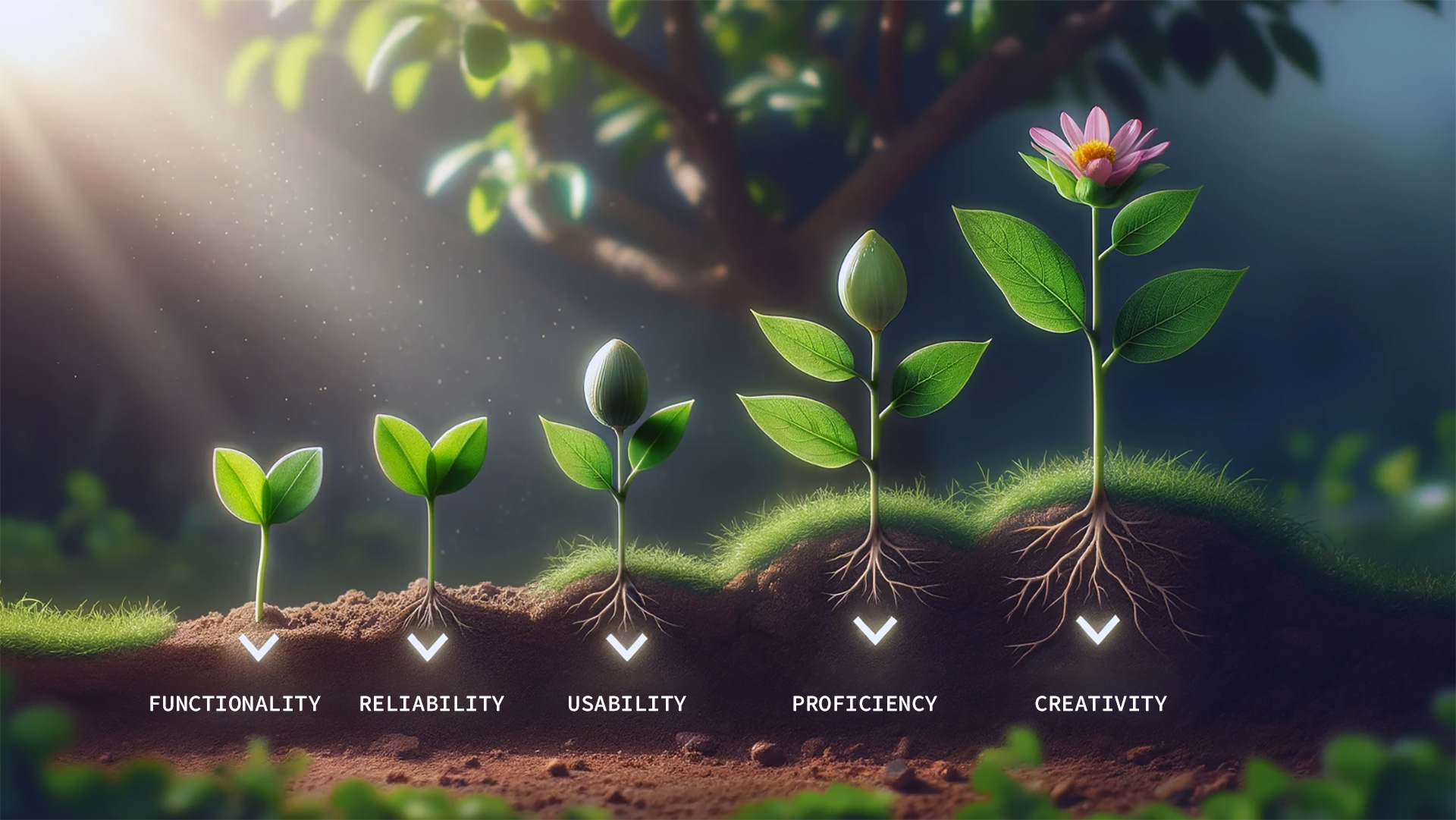HIERARCHY OF NEEDS IN PRODUCT DESIGN
HIERARCHY OF NEEDS IN PRODUCT DESIGN
In the ever-evolving world of product and user experience design, understanding user needs is paramount. It is not just about creating aesthetically pleasing designs, but about crafting experiences that resonate with users on various levels. Let's explore how design can align with user expectations to achieve optimal success, by drawing inspiration from the "Hierarchy of Needs" concept.
- FUNCTIONALITY: The Foundation
At its core, every product or service must serve a purpose. It must meet basic functional needs. If an application or product doesn't perform its fundamental tasks, no amount of aesthetic or usability enhancements will save it. Think of this as the foundation of a house; without it, everything else crumbles. - RELIABILITY: Building Trust
Once a product meets its basic functions, it must be reliable. Users need to trust that the application or service will consistently perform as expected over time. A malfunctioning product can quickly erode user trust, leading to abandonment. In the digital realm, this translates to applications that don't crash, e-commerce platforms that process transactions securely, and websites that load consistently. - USABILITY: Streamlining Interactions
Now, imagine a product that's functional and reliable but is a nightmare to navigate. That's where usability steps in. It's about ensuring that users can easily interact with the product, finding what they need without frustration. Good usability fosters fondness, turning casual users into loyal advocates. - PROFICIENCY: Empowering UsersBeyond mere usability, a great product empowers its users. It not only meets their needs but also enhances their productivity and capabilities. This level fosters pride and status. Think of advanced tools in software that allow professionals to excel in their craft, or features in apps that make everyday tasks more efficient.
- CREATIVITY: The Peak Experience
The pinnacle of the hierarchy is creativity. At this level, products and services foster a deep sense of loyalty, almost cult-like, by continually innovating and offering avenues for personal enrichment. These are the products that users don't just use, but they love and advocate for. They become a part of users' identities.
A real live example: Apple's iPhone
- FUNCTIONALITY:
iPhone combined a phone, iPod, and Internet device. Core tasks like calls, music, and browsing were streamlined effortlessly. - RELIABILITY:
Through consistent updates and integrated hardware-software, iPhone emerged as a dependable daily tool. - USABILITY:
The touch interface, with gestures like pinch-to-zoom and the fluidity of iOS, set a new usability standard in smartphones. - PROFICIENCY:
The App Store’s vast offerings and features like Siri transformed the iPhone into a versatile productivity tool. - CREATIVITY:
With innovative features and an integrated Apple ecosystem, the iPhone fostered a deep user loyalty and became a cultural icon.
Design Strategy and Market Disruption
When devising a design strategy, considering the hierarchy of needs can be enlightening. Products that only address the lower levels of the hierarchy are vulnerable to disruption. In contrast, those that ascend to the higher levels—proficiency and creativity—establish a competitive edge in the market.
In conclusion, the "Hierarchy of Needs" provides a roadmap for designers. By understanding and addressing each level, we can craft experiences that not only meet but exceed user expectations. As we innovate and iterate, it is important to always strive to climb the hierarchy, ensuring our designs are not just functional, but transformative.
